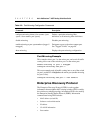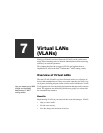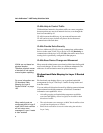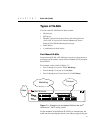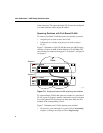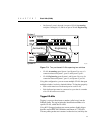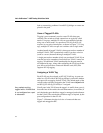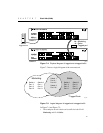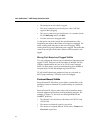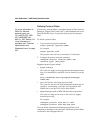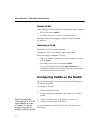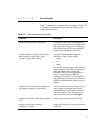
100
Intel
®
NetStructure™ 480T Routing Switch User Guide
lead to connectivity problems if non-802.1Q bridges or routers are
placed in the path.
Uses of Tagged VLANs
Tagging is most commonly used to create VLANs that span
switches. The switch-to-switch connections are typically called
trunks. Using tags, multiple VLANs can span multiple switches
using one or more trunks. In a port-based VLAN, each VLAN
requires its own pair of trunk ports, as shown in Figure 7.3. Using
tags, multiple VLANs can span two switches with a single trunk.
Another benefit of tagged VLANs is that a port can be a member of
multiple VLANs. This is particularly useful if you have a device
(such as a server) that must belong to multiple VLANs.
A single port can be a member of only one port-based VLAN. If you
want the port to be a member of more than one VLAN, it must use
tagging. All additional VLAN membership for the port must be
accompanied by tags. Along with configuring the VLAN tag for the
port, the server must have a network interface card (NIC) that
supports 802.1Q tagging.
Assigning a VLAN Tag
Each VLAN may be assigned an 802.1Q VLAN tag. As ports are
added to a VLAN with an 802.1Q tag defined, you decide whether
each port will use tagging for that VLAN. The default mode of the
switch is to have all ports assigned to the VLAN named default with
an 802.1Q VLAN tag (VLANid) of 1 assigned.
Any packets arriving
tagged with a VLANid that
is not configured on a port
is discarded.
Not all ports in the VLAN must be tagged. As traffic from a port is
forwarded out of the switch, the switch determines (in real time) if
each destination port should use tagged or untagged packet formats
for that VLAN. The switch adds and deletes tags, as required, by the
port configuration for that VLAN.
Figure 7.4 illustrates the physical view of a network that uses
tagged and untagged traffic.



